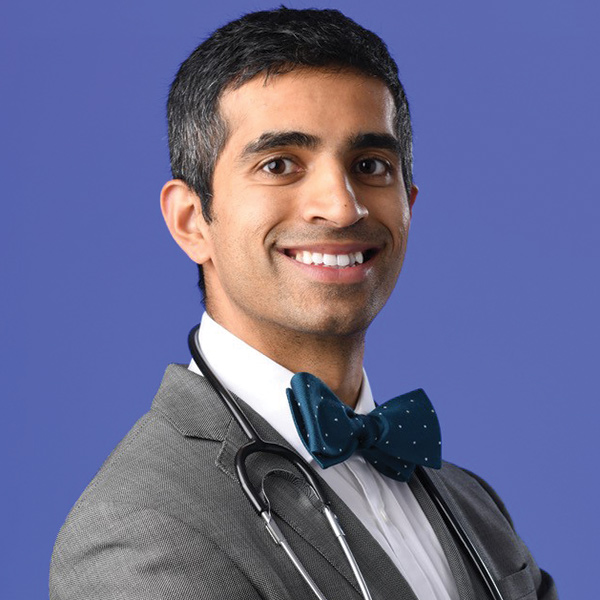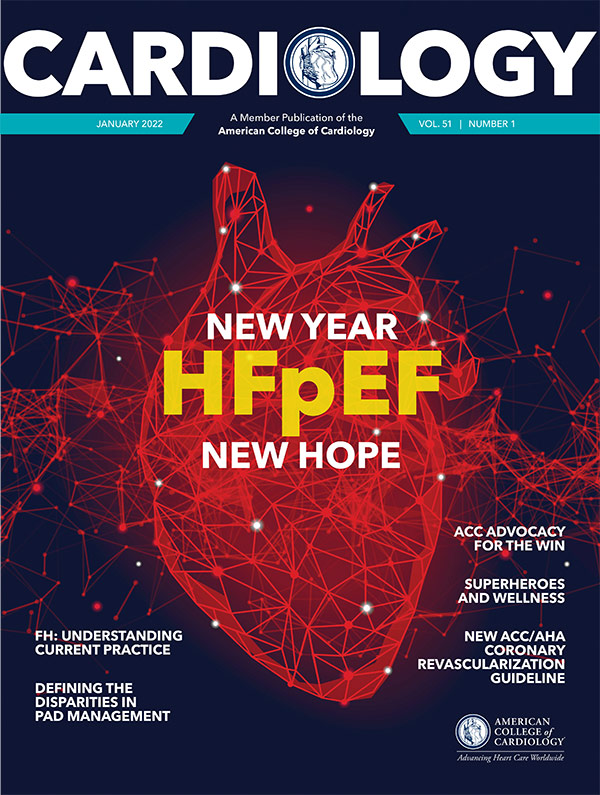Cutting-Edge Structural Interventions | Building A Structural Program: Laying the Foundation

Doing your homework was the focus of the first article in this series. Now, with that done, what are practical steps to start your programmatic growth? Realistically, you'll have many irons in the proverbial fire, so many of the actions and conversations laid out here will happen simultaneously.
Set Your Goals
Think realistically about volume targets for the next one to two years for the program and yourself. Medicine trains us to be ambitious and "shoot for the stars." Although I too subscribe to this philosophy, when it comes to business, it's best to not fall into the category of "overpromised and underdelivered." Even when you experience substantial growth and have a great year by many measures, not meeting established volume targets can undermine morale among team members and leave you wondering what happened. Set realistic goals and expectations for growth at the outset.
Be cautious not to set overly pessimistic goals either. Be mindful that hospital administrators will budget for the next year's supply costs based on the goal or range for volume that you set. Heretofore, interventional cardiology line items usually were <$5,000 a piece and usually contracted on a consignment basis (stents, balloons, etc.), so fluctuations in volume were not a big concern. However, because structural procedures use devices with hefty price tags (in the $20,000 to $40,000 range), good budgeting is now vital.
If your program performs 15-20 more procedures than anticipated, this could lead to a possible budget shortfall of $600,000 (or more) towards the end of the fiscal year, leaving your hospital administration scrambling to cover the costs. Remember, the hospital pays upfront for devices and then can wait three or more months to receive insurance reimbursement for the cases.
Clearly communicate your program volume goals to your team and hospital administration. Setting the goals and communicating them are part of demonstrating your leadership and ensuring the structural program and its growth are seen and recognized by your administration.
When setting volume targets, be sure to consider the capacity of all stakeholders. While you may think your geographic region would support a growth of 150%, for example, is this realistic for the catheterization laboratory and operating room? Do you envision using cardiac anesthesiology services? Are these departments sufficiently staffed and/or able to grow in tandem with the growth of your program? Anesthesiology can be volume limiting at many centers – making a nurse-led sedation model an attractive option for many centers.1
Moreover, consider what will be used for recovery and the space required. Will this be an ICU setting? It's wise for nascent programs to play things safely, but recognize this may place a ceiling on the number of procedures performed daily. Are you comfortable with a model where patients are in a post-anesthesia care unit (PACU) until they awaken from deep sedation or general anesthesia and then are transferred to a traditional cardiac floor?
Zoom out and consider the structural program volumes from the standpoint of the patient flow for the entire hospital. Chances are structural procedures are a minority of the surgical volume in your hospital. Be mindful that procedural volumes will continue to fluctuate because of COVID-19. Thus, there may be delayed elective knee replacements and hernia repairs that can add strain to an already burdened postsurgical nursing staff. The nursing supervisor is a key stakeholder in this discussion – reach out early to start the conversation to explore the best path.
At my center we've evaluated training our postcardiac catheterization recovery staff to double as PACU nurses. This would allow us to use our own cardiac PACU for our structural patients to recover after procedures with deep sedation or general anesthesia. Accomplishing this will require support from nursing supervisors and cardiac anesthesiology, as well as obtaining new equipment to handle emergent reintubation or noninvasive positive pressure ventilation. This process, including the training to ensure nurses have the specialized skills, can take several months to implement but may pay dividends in terms of efficiency and volume growth.
Build Your Team
It all starts with determining the number of staff you need, the roles and credentials required. If you already have full-time equivalent (FTE) staff assigned to your program, is there enough?
The types of FTEs matter too. Do you need advance practice providers (APPs), registered nurses (RNs), licensed practical nurses (LPNs) and medical assistants, and how many of each? Each is an integral member of the CV Team and the goal is for each to practice at the top of his or her medical license. Ideally, this means structural physicians are spending the majority of their time doing structural procedures, and APPs spend most of the day seeing patients (inpatient or outpatient) in consultation with the physicians to design plans of care.
Productivity falls significantly when team members spend time on work best handled by someone else on the team (i.e., APPs or physician scheduling patients for follow-up visits). Scheduling all follow-up visits should ideally be done all at once by your scheduler (more on this later).
A medium-sized structural program performing 100-300 procedures annually should have at least three or four dedicated FTEs supporting the clinic and patients to ensure a good patient experience. A valve clinic coordinator (VCC) is needed to manage daily administration. In our program, we've learned this role is best filled by an RN. A good VCC should serve as the air traffic control for a structural program. This requires planning ahead, averting crashes and filling in the gaps where needed.
Providing a Wholistic Patient Experience
If your structural clinic is adequately staffed, focus on automating many of the processes with an eye on providing the highest level of patient satisfaction and care. This is vital to growing the business through word-of-mouth marketing which remains the most cost-effective marketing strategy in any business. Structural clinic operations can be divided into three buckets: preprocedure, periprocedure, and postprocedure.
Preprocedure Operations
This is the time for patient education. ACC's CardioSmart provides a range of free tools and resources. Note that much of this education can be automated. In our clinic, we have an established process where the clinic nurse provides the patient education and walks patients through their disease process as they are rooming the patient.
Most patients are referred after being diagnosed with severe valve conditions that require either a transcatheter edge-to-edge repair (TEER) or an aortic valve replacement. Yet many know little about their baseline condition. Thus, before I even go into the room, our structural clinic nurse has provided some basic education on the patient's condition and screened a handful of preselected You Tube videos on our office's tablet. This makes my time with the patient more effective, primarily focused on discussing the treatment options in a shared decision-making model.
Scheduling is another important aspect of the preprocedure process. Patients will require a slew of diagnostic testing, for instance CT scan, transthoracic echo (TTE), transesophageal echo, heart cath, as well as visits with other departments (usually cardiac surgery but sometimes neurology and gastroenterology). Our goal is to schedule all visits and tests on one day. However, contrast studies must be scheduled at least one week apart in patients with chronic kidney disease. This level of coordination requires buy-in from the hospital administration and various departments.
Ideally the best set up is one in which the cardiologists and cardiac surgeons share a common clinic space and time to see valvular heart disease patients together. However, this may be challenging in a community setting given space and scheduling constraints.
In this time of COVID-19, many of our patient encounters occur via telehealth. Yet, I still aim to make sure all processes are followed in an algorithmic fashion given that many visits are similar. A week or two prior to the patient's telehealth visit, we mail a packet that includes: 1) a generic letter from me that provides an overview of the procedure, 2) industry brochures about their procedure, 3) shared decision-making aids (if relevant), 4) basic information about the disease process itself, 5) our clinic/VCC contact information, and 6) my business "baseball" card with a photo of their provider on the front and her/his credentials on the back.
It is vital that our patients receive the packet far enough ahead to have sufficient time to read everything (or have a family member read it to them) and discuss it with their family. This is because in our rural geographic region, most patients do not have solid internet access, so most telehealth visits still occur via telephone. For areas with a higher degree of non-English speaking patients, this technique can be adapted by sending patients materials in their primary language. Our focus is to help diminish the disparities in care and access faced by many patients, which is usually driven by a lack of knowledge and inadequate access to information.
On the morning of the telehealth visit, our structural LPN calls patients and informs them of the reason for the referral, provides patient education and gets them ready for the visit. This provides a solid foundation for a full-fledged shared decision-making discussion when I talk with the patient. Because the call is by phone, I will prompt the patient to turn to specific visual aids and even page numbers, so we're jointly reviewing the materials.
Periprocedure Operations
Ensuring the patient understands the instructions for the procedure and the medications to stop, along with where to go, are the most important aspects here. For the preoperative testing, including COVID-19 testing, we try do as much as possible at clinics closer to where they live, as some patients may be up to two hours away from our hospital. This is "automated" and we send the orders and request the records. This "automation" means a member of the structural clinic staff takes note of the distance the patient lives from the hospital and arranges for this testing to be done locally to the patient, if preferred. This should happen without the provider having to ask. These patient-centric touches help patients automatically feel more comfortable, because they appreciate not having to travel long distances just to complete routine lab work.
Use this time to schedule all the postoperative appointments. This is key to ensuring the patient has all the information on the day of discharge. In our EMR (Epic), the follow-up appointments must be in the system by the time of discharge, otherwise they are not included in the patient's discharge paperwork. Based on NCDR data reporting requirements, we prefer to have the follow-ups scheduled, especially the echo or CT scan based on the preliminary date of the procedure.
Postprocedure Operations
This also requires meticulous attention to detail to ensure all NCDR reporting requirements are met. This involves close patient follow-up and usually obtaining postprocedure echoes and/or CT angiography at certain regularly scheduled intervals.
Our program has implemented a process for patients to obtain their TTEs closer to home at their local clinic or physician. If there is a local option for their cardiac CT angiography, we encourage this too.
I've reached out to local hospitals with these facilities to ensure they use the same protocols we do for image acquisition to ensure we obtain similar images. With the patient's permission, these images are shared with us and then we use them to ensure all postprocedure requirements are met.
Our singular focus is making sure the world-class care we strive to provide is accessible, convenient and delivered with the highest quality. We want our patients to feel that we value their time as much as they value ours. We strive to diminish health care disparities by providing patient-centric care to all.
There is still much more to discuss about building a structural heart program. Now that we've laid the groundwork. you must be curious about how to get the growth and find the cases. This is a fascinating topic. I look forward to sharing my journey with you in my next article in this series.

This article was authored by Sandeep Krishnan, MD, RPVI, FACC, an interventional and structural cardiologist and director of Structural Heart Disease at the King's Daughters Medical Center in Ashland, KY.
Do you have a topic or question to be addressed in this series? Tweet the author @SKrishnanMD or email him at xsandeepx@gmail.com. Thank you.
Reference
- Keegan P, Lisko JC, Kamioka N, et al. Nurse led sedation: The clinical and echocardiographic outcomes of the 5-year Emory experience. Structural Heart 2020;4:302-9.
Clinical Topics: Cardiac Surgery, Cardiovascular Care Team, COVID-19 Hub, Invasive Cardiovascular Angiography and Intervention, Noninvasive Imaging, Sports and Exercise Cardiology, Valvular Heart Disease, Aortic Surgery, Cardiac Surgery and VHD, Interventions and Imaging, Interventions and Structural Heart Disease, Computed Tomography, Echocardiography/Ultrasound, Nuclear Imaging, Sports and Exercise and Imaging
Keywords: ACC Publications, Cardiology Magazine, Access to Information, Accidental Falls, Accidents, Traffic, Anesthesia, General, Anesthesiology, Aortic Valve, Audiovisual Aids, Automation, Aviation, Baseball, Cardiac Surgical Procedures, Cardiologists, Cardiology, Catheterization, Computed Tomography Angiography, Cost-Benefit Analysis, COVID-19, COVID-19 Testing, Decision Making, Shared, Deep Sedation, Echocardiography, Electronic Mail, Family, Follow-Up Studies, Gastroenterology, Goals, Healthcare Disparities, Heart Diseases, Heart Valve Diseases, Herniorrhaphy, Hospital Administration, Hospital Administrators, Hospitals, Inpatients, Inpatients, Insurance, Intensive Care Units, Internet Access, Laboratories, Language, Leadership, Licensed Practical Nurses, Marketing, Morale, Motivation, Neurology, Nuclear Family, Nurses, Nurse's Role, Nursing Staff, Operating Rooms, Outpatients, Pamphlets, Patient Discharge, Patient Outcome Assessment, Patient Satisfaction, Patient-Centered Care, Philosophy, Physicians, Positive-Pressure Respiration, Postal Service, Referral and Consultation, Renal Insufficiency, Chronic, Research Design, Stents, Surgeons, Tablets, Telemedicine, Telephone
< Back to Listings

